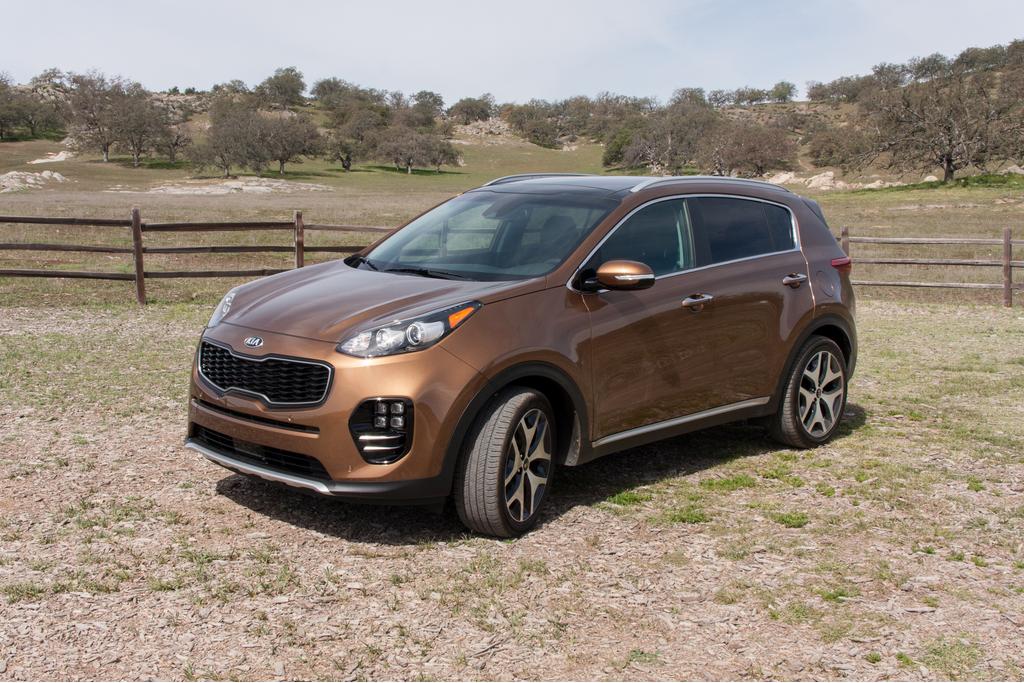
CARS.COM — The 2017 Kia Sportage is back with a full redesign that improves most aspects of the compact SUV. Exterior styling is new, new technology and safety features have appeared, and there also are "under-the-skin" improvements that Kia says enhance the driving experience.
The Sportage is offered in three trim levels: LX, EX and SX Turbo. I spent a day in the front- and all-wheel-drive versions of the SX Turbo driving around the hills of San Diego to see if the changes are enough to give the Sportage a leg up in this highly competitive vehicle class.
2017 Kia Sportage Cars.com photo by Brian Wong
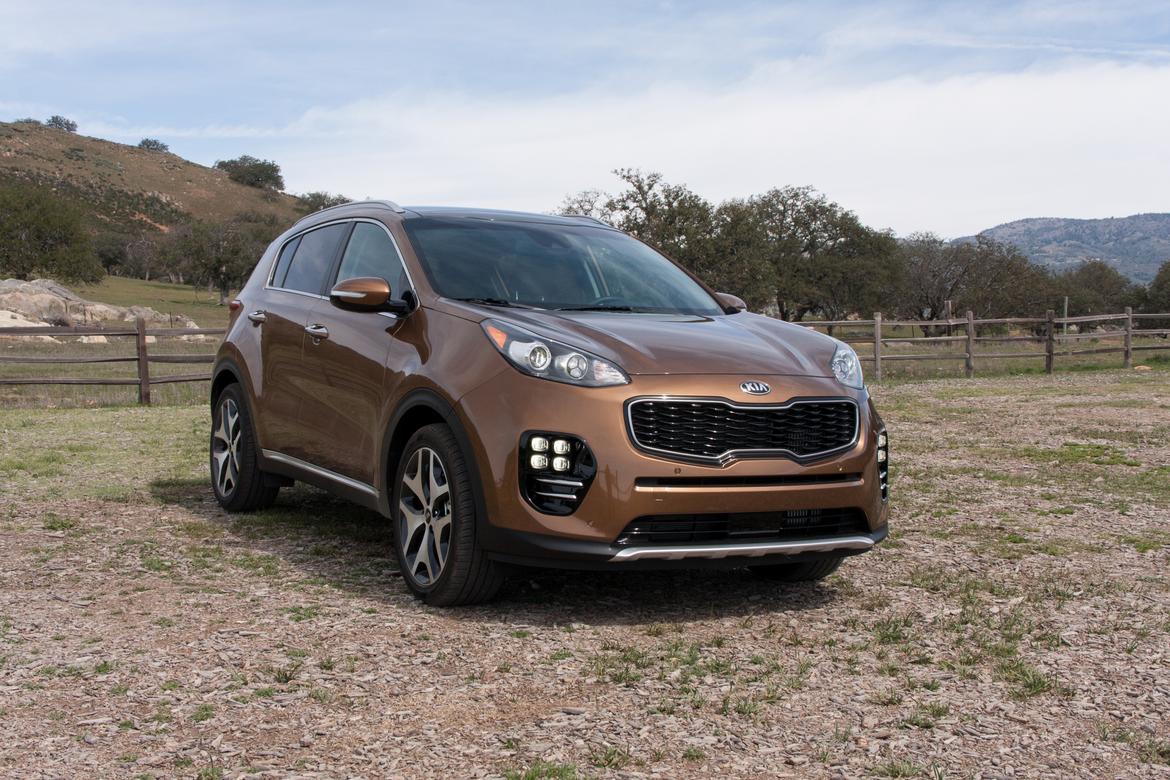
Exterior
Underneath its skin, the Sportage shares a platform with the Hyundai Tucson, which got its own redesign last year. Our team noted that the Tucson's new styling made it look bigger than its dimensions would suggest, but the opposite is true of the Sportage. Although the wheelbase has been stretched by 1.2 inches, the proportions make the Sportage look stubby and a bit awkward from several angles.
It's strange that the look doesn't work so much for me, because there's nothing off-putting about the styling elements on their own; the quad-LED fog lights look great, day or night, and I also like the faux-brushed-metal skid plates that peek out from the front and rear bumpers (both features are standard on SX Turbo models). But taken as a whole, the Sportage doesn't quite come together.
Standard exterior features include LED daytime running lights, automatic headlights, a rear spoiler and 17-inch alloy wheels. The SX Turbo adds 19-inch wheels, bi-xenon headlights that swivel in the direction of the turn, LED taillights and a power liftgate that will open automatically if you stand behind it with the key fob for three seconds.
2017 Kia Sportage Cars.com photo by Brian Wong
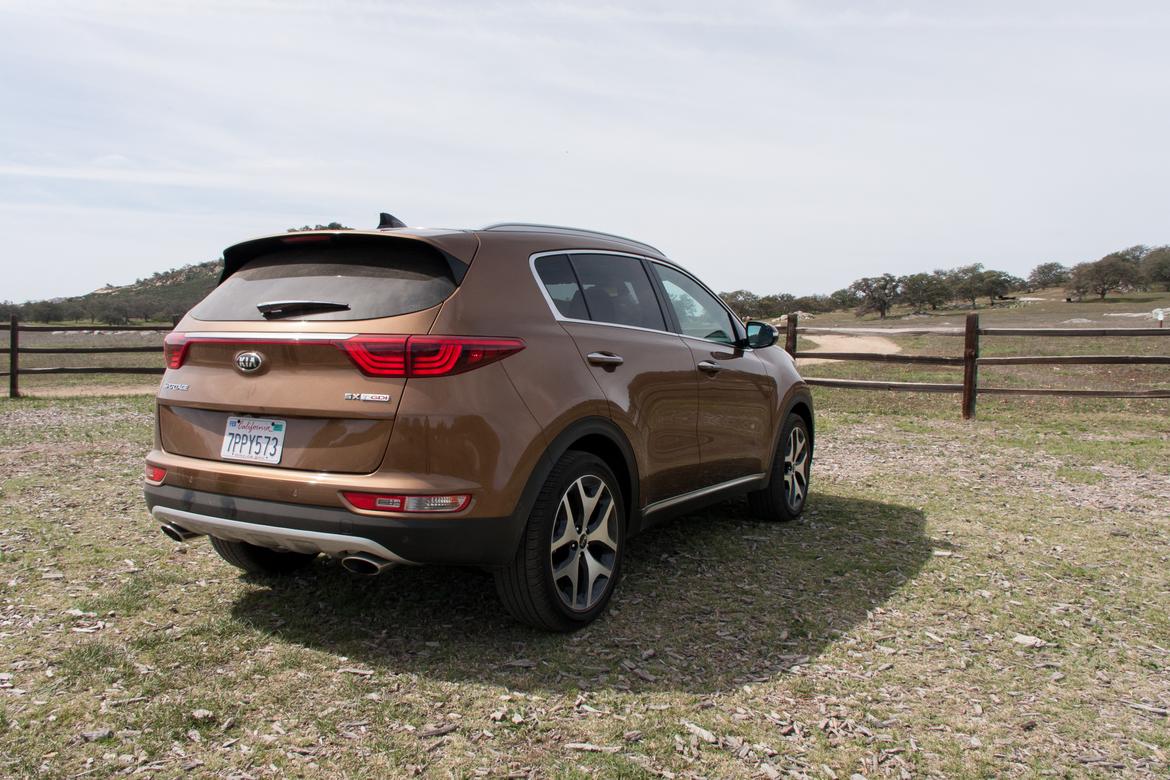
How It Drives
Both of the Sportage's available engines are carryovers from last year's model, but the turbocharged 2.0-liter four-cylinder engine found in the SX Turbo has been retuned for greater efficiency and less horsepower, now 240 horsepower and 260 pounds-feet of torque, a drop of 20 hp and 9 pounds-feet of torque versus the 2016. A six-speed automatic is the only transmission available across the whole Sportage lineup. (LX and EX models both feature the base engine, a 181-hp, 2.4-liter four-cylinder.)
Even with the power dip, I found the engine to be more than up to the task of hauling the Sportage around. It wasn't taxed at all in normal driving conditions and easily delivered power for passing or to shoot up mountain roads. The turbo-four's 240 hp has plenty of oomph, and if you can keep it in the mid- to high-rev range, it's worth a few smiles as well.
The Sportage's Dynamax all-wheel-drive system features a 50/50-locking center differential and technology that's claimed to detect driver inputs and road conditions to react quickly to minute traction losses and emergency maneuvers before slippage occurs. It also features a front-wheel-drive bias to help fuel economy.
Driving the two versions back to back, it felt like the front-drive version of the Sportage was more spirited and reacted more quickly to accelerator inputs. But the all-wheel drive was impressive in a different way. I did a hard launch off of gravel and another with both tires on one side off the road on dirt, and it handled both situations gracefully, skipping off without any detectable slippage or wheel hop.
Our editors previously knocked the Sportage for its steering feel, but the 2017 updates seem to have worked because I liked the steering. I found it to be smooth at all speeds, offering enough feedback to avoid vagueness and tightening up at speed, which made it easy to keep the Sportage heading straight on the highway. Body roll was much lower than I anticipated on tight bends, and the suspension also handled broken pavement well. I found the overall driving experience to be enjoyable, and I'd put the turbo version of the Sportage near the very top of the segment in that regard.
2017 Kia Sportage; Cars.com photo by Steven Pham
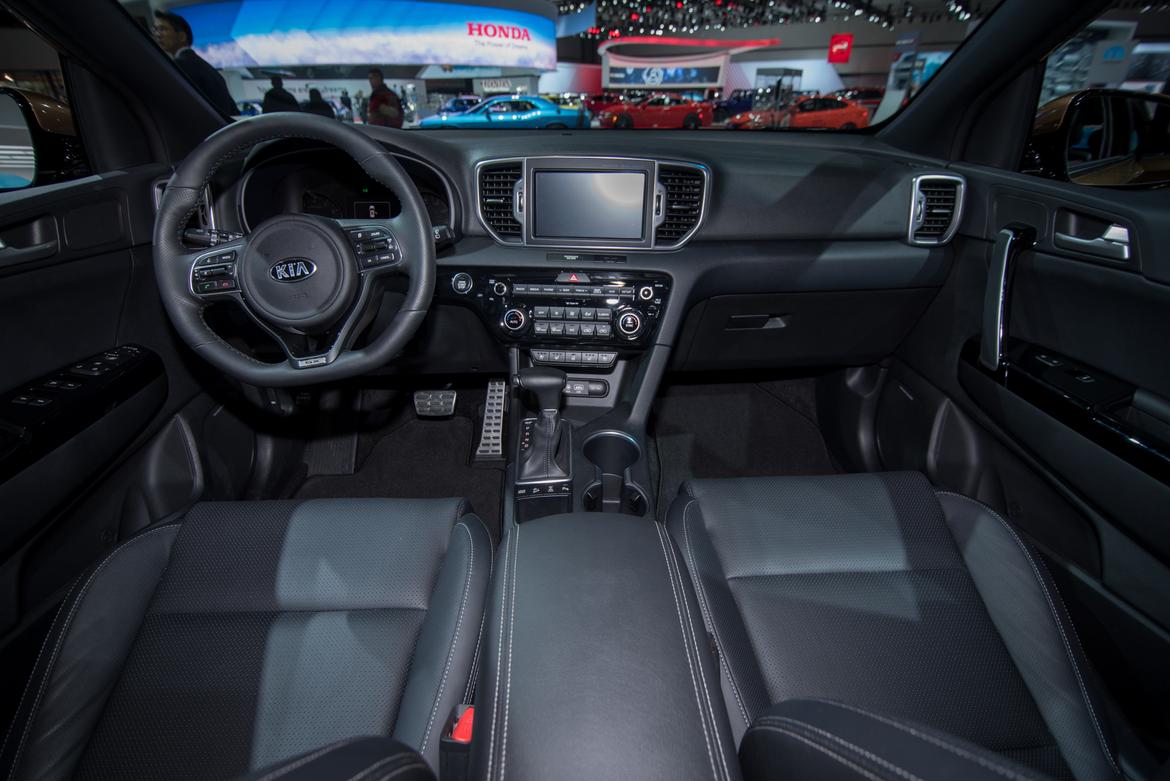
Interior
Inside, the Sportage cabin remains straightforward in execution and styling. The seats, materials, fit and finish are all on par with the other top trim levels you'll find in this class. What has improved, however, is visibility, thanks to thinner A- and C-pillars and more rear glass, which is a welcome change.
Rear passenger volume is likewise a plus, especially headroom. The rear-seat height and interior floor have both dropped by more than an inch, so there's plenty of air up there for passengers. Extending over the backseat was my favorite of the interior features — a massive panoramic moonroof that is 4.1 inches larger than the one offered for the 2016. When open, it lets in tons of light and air.
Cargo volume behind the backseat has grown as well by 18 percent to 30.7 cubic feet and is helped by a cargo floor that can be lowered by about 3 inches to fit taller objects.
2017 Kia Sportage Cars.com photo by Brian Wong
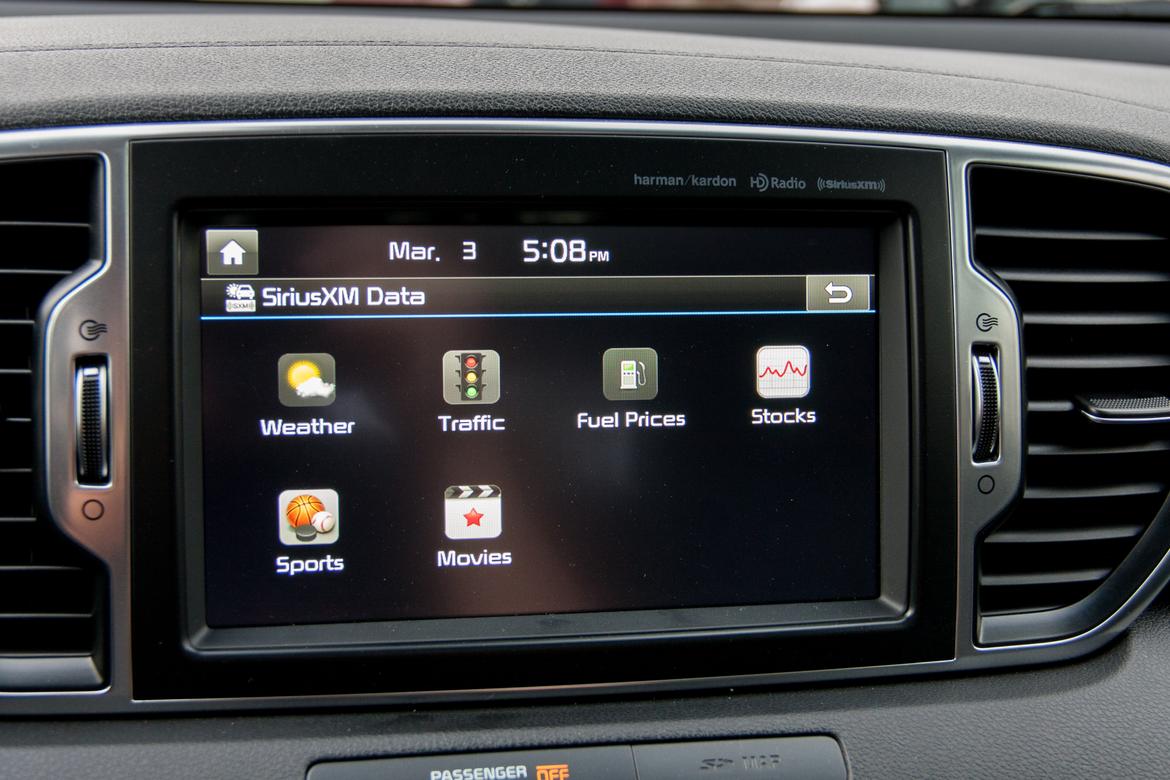
Ergonomics and Electronics
The 2017 Sportage is the first vehicle in Kia's lineup to feature a new generation of its UVO infotainment system, UVO3. The Sportage offers a few different infotainment systems, one with a 7-inch touch-screen on EX models (optional on LX) and another with an 8-inch screen and onboard navigation in the SX Turbo (optional on EX). Both feature UVO3, eServices and Android Auto. Apple CarPlay, however, will not be available until April. Kia says the infotainment system will be updatable at dealerships if buyers want to add CarPlay later. (Models with the smaller 7-inch touch-screen system may be updatable at home by means of a USB drive, but Kia's plans for those models are not yet set.)
Using the system was easy; the controls and menus are intuitive, it's easily reachable from both front seats, and the screen was responsive and predictable. I also remain a fan of Kia's canted center dashboard controls, which in this application point 7.2 degrees toward the driver's side. It makes things easier to see and access from the driver's seat without being so slanted that the passenger can't use it.
Safety
A redesign is a good time for automakers to add new safety technology because they can integrate the necessary cameras, radar and other instrumentation seamlessly. This was the case with the Sportage, which adds blind spot warning, rear cross-traffic alert, forward collision warning with autonomous emergency braking (with pedestrian detection) and lane departure warning. These features are standard on the SX Turbo and available in a package on the EX but not the LX.
I wasn't able to give the forward collision warning system a thorough test thanks to strong self-preservation instincts and a desire not to crash a brand-new SUV, but Kia says the systems should both work at any speed from zero to approximately 112 mph.
There is one strange omission in the Sportage's suite of safety features: no adaptive cruise control. Adaptive cruise usually uses the same hardware as the forward collision warnings and autonomous braking systems (which are both present here), so to not include it is an interesting choice, especially because it can be found on more of the competition every year.
A backup camera is now standard across all trim levels.
2017 Kia Sportage Cars.com photo by Brian Wong
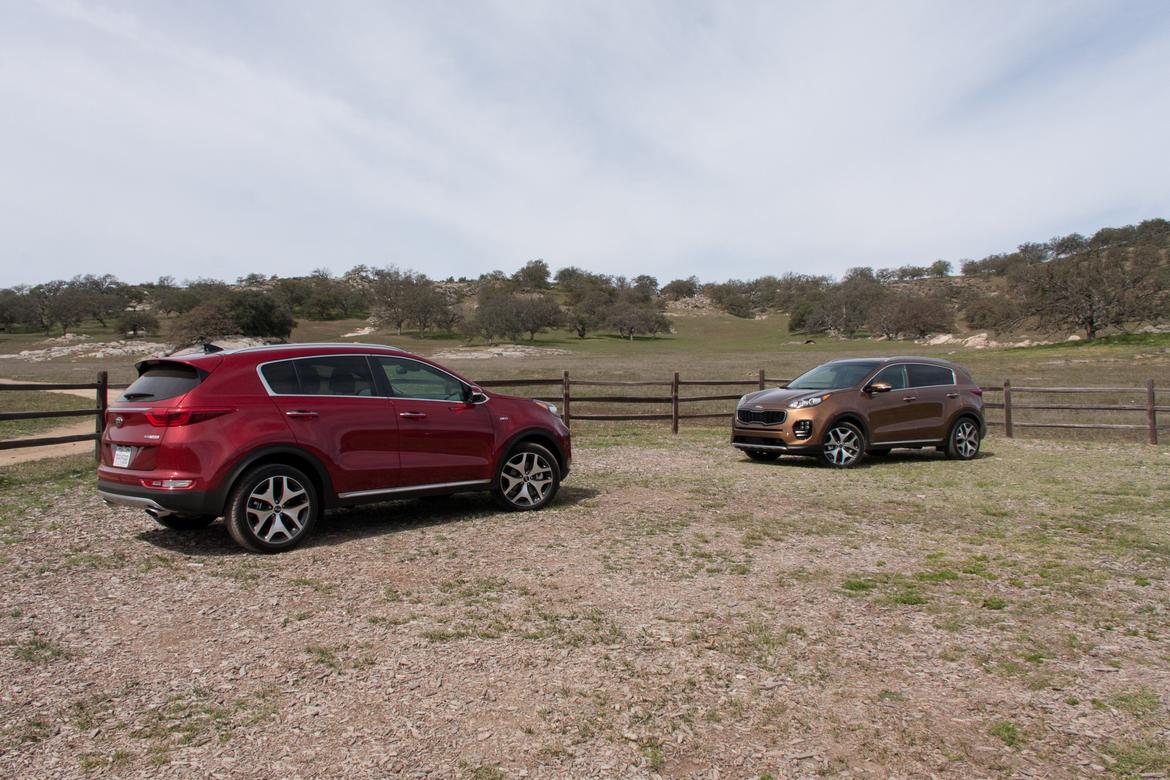
Conclusion
The redesigned Sportage performed pretty much flawlessly in my testing, and that is not something I say lightly. Though its improvements are incremental across the board, they touch almost every part of the vehicle. It's roomier, slightly more fuel efficient, has a well-balanced ride and (with one exception) now offers the latest safety technology. Our previous nits have been addressed as well; the steering has better programming/feel and visibility has improved. It sits as the class leader in my mind.
The only place the Sportage felt compromised was price. The as-tested prices for the Sportages I drove were high: $33,395 (including destination) for the front-drive SX Turbo and an extra $1,500 for the all-wheel-drive version. Even if you jump down to an EX with the smaller engine, equipping it with all of the safety and media technology requires adding two packages at a cost of $4,700, which brings the minimum for a Sportage with those features to a cool $31,095. That's a lot scratch, considering a Subaru Forester that does everything almost as well can be had with the same safety features and standard all-wheel drive for $27,940.
This is one instance where the best vehicle in the segment will also cost the most, but I think shoppers who are willing and able to pay the premium won't be disappointed.
No comments:
Post a Comment